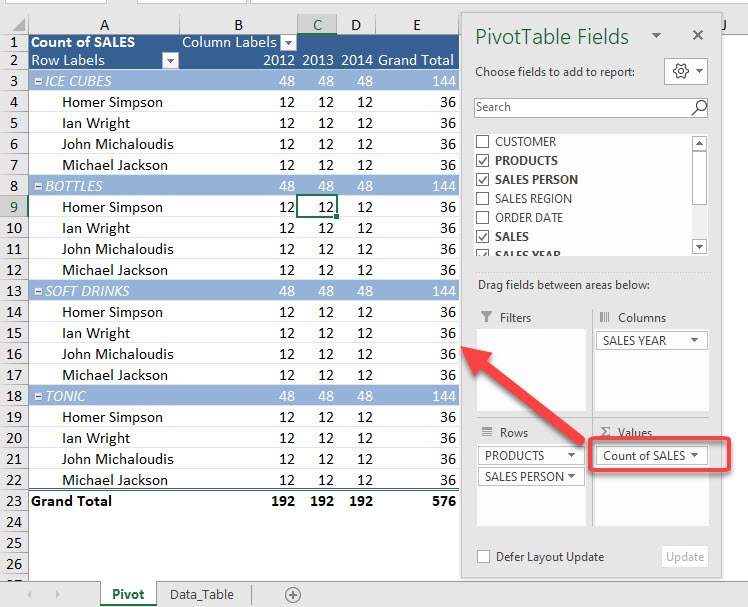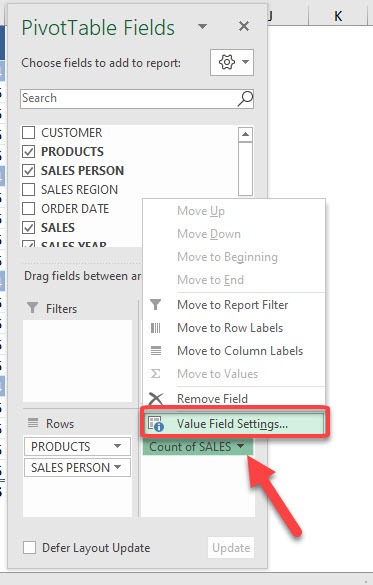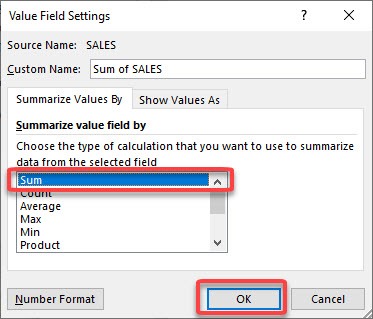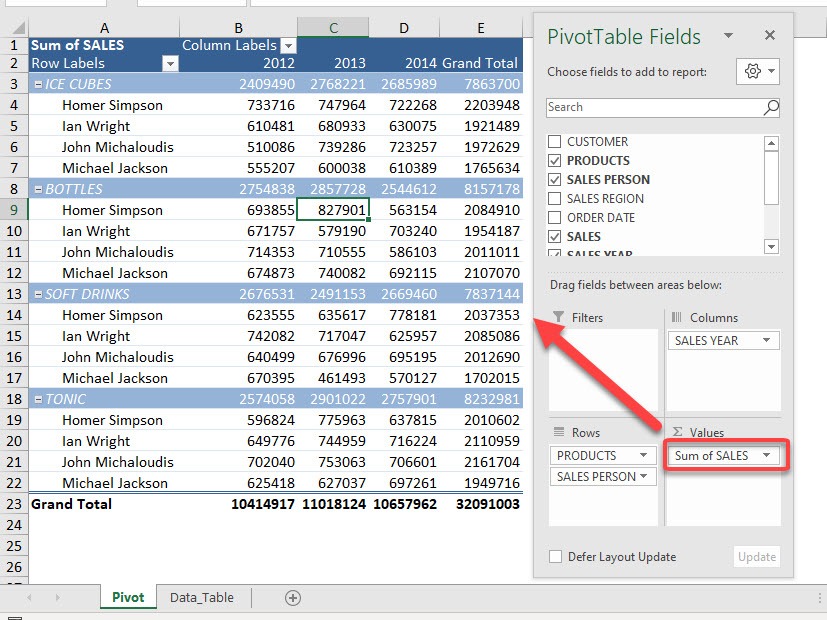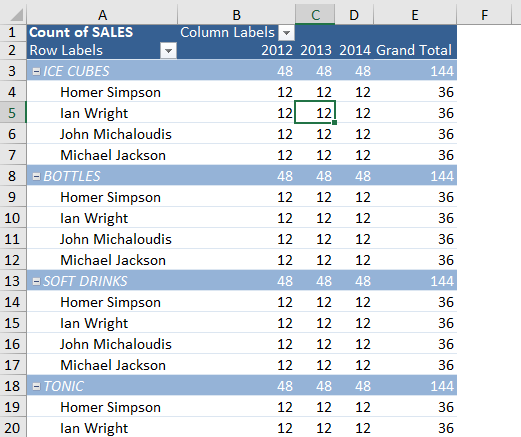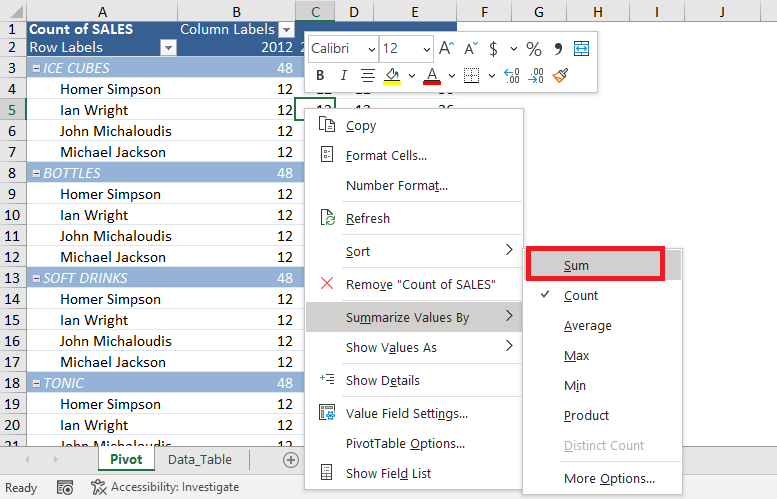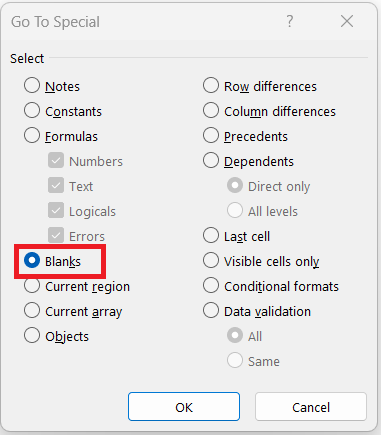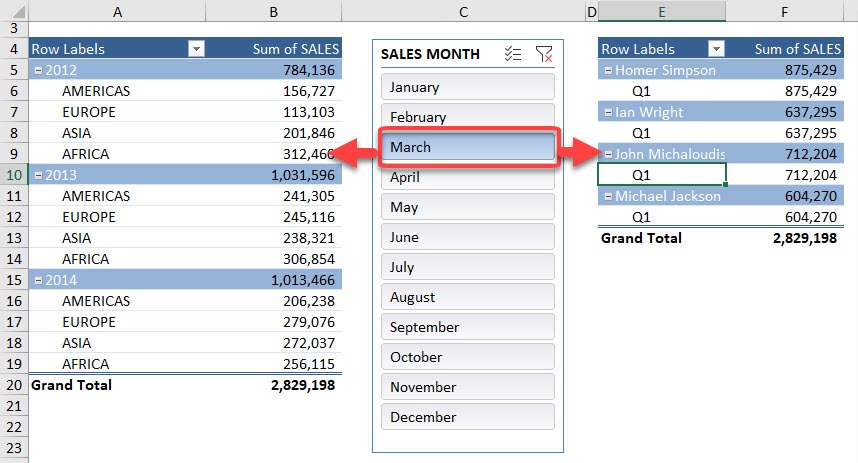Key Takeaways:
- To change from Count to Sum in Excel Pivot Tables for numerical data, right-click on a cell within the column you wish to modify, select “Summarize Values By”, and then choose “Sum”. This action will recalculate the pivot table to display the sum of values instead of the count.
- Using the Sum function as a default calculation in a Pivot Table instead of Count provides a more accurate depiction when working with numerical data columns that contain all numbers. This avoids inadvertently summarizing data by count, which can lead to misleading interpretations of the data set.
- The pivot table allows for the easy switching of summary functions, not limited to Sum and Count. Users can select other calculations such as Average, Max, Min, Product, Count Numbers, StDev/StDevP, Var/VarP, and Distinct Count based on the data analysis needs. This functionality enhances the versatility of Pivot Tables for different types of data assessment.
Exercise Workbook:
Here is our Pivot Table, it’s currently set up to get the counts. But we want the sum of sales instead, so let us fix that pronto!
Method 1: Using the Pivot Table Fields tab.
STEP 1: Click on the arrow beside Count of SALES and select Value Field Settings
STEP 2: Select Sum and click OK
Now your Sales values are now being calculated as Sum instead of Count!
Method 2: Directly through the Pivot Table cells.
Additionally, you can also try this approach:
Step 1: Select any cell within the column.
Step 2: Right-click the cell and select Summarize Values By > Sum from the drop-down menu.
As you can see, the field value has now been updated to SUM instead of COUNT.
Table of Contents
Troubleshooting Common Pivot Table Sum Issues
Dealing with Blanks and Zeros in Source Data
Confronted with a PivotTable defaulting to count instead of sum due to blank cells can be perplexing. When your data has blank entries, you may see this happen because Excel doesn’t have a value to sum, so it counts instead. A simple fix is to fill those blanks with zeros. You can effortlessly do this by using the Find & Replace feature—just keep the Find What box empty and type 0 into Replace With, then hit Replace All. Remember, if you inject zeros into your data, this might impact average calculations, as zeros are factored into the mean, unlike blanks.
Errors with Sum Function and How to Address Them
When you encounter errors within your source data, they can cascade into your PivotTable’s sum function, which can be quite the headache. Not to worry though, as you can tackle them with a few clever strategies. If your data fields have errors such as #DIV/0! or #VALUE!, these errors will appear in your PivotTable and corrupt sum totals.
Here’s what you can do: Consider removing or correcting the errors in your source data first. If that’s not possible, try applying the IFERROR function around your formulas to handle errors gracefully. For example, =IFERROR(A2/B2,0) replaces a division error with a zero.
Additionally, adjusting your PivotTable’s settings could help. Opt to use the “Count Numbers” function which skips errors, text, and blanks, or “Count” which includes errors and numbers for a more accurate representation.
Remember, carefully checking your data for errors and preemptively addressing them helps maintain the integrity of your sum calculations in PivotTables.
Enhancing Your Excel Productivity
Creating Summary Reports and Dashboards
One of the true strengths of Excel lies in its capability to create succinct, informative summary reports and dashboards from complex datasets. Crafting these high-level perspectives can be greatly simplified with PivotTables. To begin, select the range of data you want to analyze and insert a PivotTable. Then, drag and drop fields into the Rows, Columns, and Values areas to design your report layout. With the Values area, use the sum function for a cumulative analysis of your numeric data.
Dashboards elevate your reporting game; they provide an interactive way to visualize key metrics at a glance. By creating a PivotTable, you can then enhance it with PivotCharts, Slicers, and Timelines for a dynamic dashboard that provides insightful analysis and drill-down capabilities.
By tweaking the design and applying conditional formatting, you ensure immediate attention to important data trends and outliers. They’ll transform your raw data into actionable insights, making them must-haves for anyone keen on data-driven decision-making.
Utilizing Slicers for Improved Data Analysis
Slicers are an exceptional tool in Excel that you can use to your advantage to dissect and examine your data swiftly. Picture them as an intuitive way to filter the information shown in your PivotTable or PivotChart. They’re not just functional; they also add an aesthetic quality to your spreadsheets.
Adding slicers is quite simple—just click on your PivotTable, head to the ‘PivotTable Tools’ on the ribbon, choose the ‘Analyze’ tab, and then select ‘Insert Slicer’. Then, select the fields you’d like to use as filters. Now, with just a click, you can filter your data without diving into drop-down menus.
Moreover, slicers are customizable, enabling you to match them to the theme of your workbook or presentation. You can alter the colors, buttons, and settings to make the slicer large or compact, depending on your preference.
The clarity and interactivity they provide are game-changers when it comes to data analysis in Excel. They make reports more understandable, enabling viewers to drill down to the information that matters to them without shuffling through rows and rows of data.
FAQ: Pivot Table Count to Sum Inquiries
Why does my pivot table default to count instead of sum?
Your PivotTable defaults to count instead of sum because it’s encountering non-numeric data in the field you’re trying to summarize. This could be an empty cell, text, or an error in at least one of the cells. To ensure the default action is the sum, you’ll want to clean your data to have numbers in every cell you’re working with.
How can I convert multiple fields in a pivot table from count to sum simultaneously?
You can convert multiple fields from count to sum by using a VBA macro, which allows you to change the summary function of every data field in your pivot table to sum with just one action. Create the macro in the Visual Basic for Applications editor, and run it while your pivot table is selected. This eliminates the need to manually adjust each field.
What other factors could change the calculation type to count?
Factors other than non-numeric data causing your PivotTable to default to ‘Count’ include grouped data fields or a mix of text and numeric values in the same column. Sometimes formatting issues can also cause Excel to misinterpret numeric values as text. Checking for consistent data types and correcting groupings or format discrepancies should keep your calculations on track.

Bryan
Bryan Hong is an IT Software Developer for more than 10 years and has the following certifications: Microsoft Certified Professional Developer (MCPD): Web Developer, Microsoft Certified Technology Specialist (MCTS): Windows Applications, Microsoft Certified Systems Engineer (MCSE) and Microsoft Certified Systems Administrator (MCSA).
He is also an Amazon #1 bestselling author of 4 Microsoft Excel books and a teacher of Microsoft Excel & Office at the MyExecelOnline Academy Online Course.
